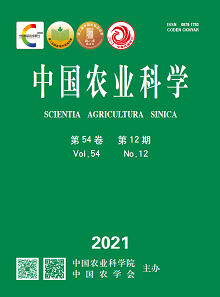【Objective】This study aimed to provide a theoretical basis for the postharvest storage and production of Shatangju tangerine (Citrus reticulate) under the plastic film covering of the tree canopy.【Method】 Shatangju tangerine was used as the research subject under two treatments, including canopy covering with plastic film and no canopy covering (control). The samples were collected in seven periods. Then, the color index, total soluble solids (TSS), titratable acid (TA), primary metabolites, respiration rate, hormone levels, fruit surface wax components, expression levels of wax synthesis-related genes, weight loss rate and decay rate were measured.【Result】Compared with the control, canopy covering with plastic film resulted in a slower decline rate of glossiness on fruit surface, redder peel color, 1.37%-3.37% increases in total soluble solid contents, 1.87-8.12 increases in solid-acid ratio, 1.93%-16.45% decreases in respiration rate, 13.48-15.04 ng·g-1 increases in endogenous ABA content, 1.14-3.47 μg·cm-2 increases in wax, 22.24%-29.27% reduction of weight loss, and 1.06%-17.65% reduction of decay rate; besides, the expression levels of most genes related to wax synthesis, such as CER1 and CER26, were higher than those of the control. With the delay of the harvest time under plastic film covering of the canopy, the glossiness and solid-acid ratio of the fruit showed continuous decreasing from the end of December to February 28, followed by a slight increase in March; in addition, the peel color gradually changed from bright red to yellow and then turned to red in March. The soluble solid content and weight loss rate showed a continuous rising trend. The postharvest decay rate increased gradually, and the samples on February 3, February 28 and March 16 showed decay rates of 19.26%, 32.06% and 30%, respectively, after 25 days of storage. Furthermore, the flowering time of Shatangju tangerine in the Guilin production area was the late March. Hence, too late harvest might affect the flowering and fruit setting of the tree in next season.【Conclusion】The results showed that plastic film covering of canopy could significantly enhance the ABA content and surface total wax of Shatangju, reduce postharvest decay and loss, and improve freshness preservation, but too late harvest would affect the freshness preservation performance of the fruit. It was suggested that the reasonable harvest period of Shatangju tangerine with plastic film covering of canopy in Guilin Guangxi should be before late February.









